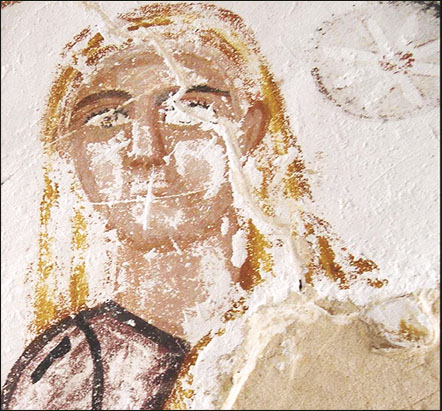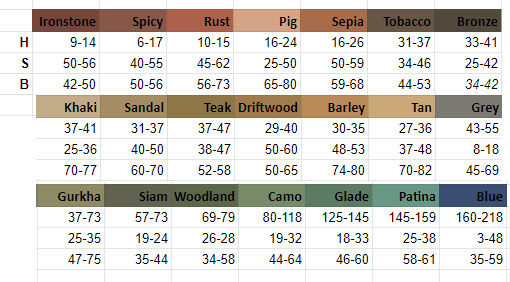Welcome on my Voynich manuscript research blog. First of all, if you are not familiar with this manuscript, you should take a look at the wiki first, since my posts assume that the reader has at least a general idea about the work and its various sections.
My own background is in historical linguistics, especially in Dutch. I do not consider this background particularly useful in the field of Voynich studies, so I am definitely not an expert. Then again, I believe that very few people are when it comes to this very particular artifact.
In the face of the Voynich, we are all amateurs.
If you have any questions or comments, don’t hesitate to leave a reply, or contact me at koengheuens “at” gmail.com .
“In the face of the Voynich, we are all amateurs”.. hmmn. I don’t think of it as unique to the point where it neutralises all relevant skills, training and experience in provenancing imagery, manuscripts, or analysis of text. But I would think that, wouldn’t I? 😀
LikeLike
Well… There are various degrees of amateurism 😉
LikeLike
Well, I will tell you just a few of the reasons why the Voynich manuscript strikes me as decidedly outside either Judeo-Christian or classical culture. These cultures are most decidedly rape cultures, and there is absolutely zero graphical allusion to rape in the whole of its pages. The only fellow even halfway hinting at a military is the crossbow holder, and he certainly does not appear to be at war, and battles, wrestling, and men drinking are prominent icons in Greco-Roman iconography. They are absent here, along with so much of what one would expect if some man of letters were to create it. In addition, with very little exception, the women are all exceedingly fair, even blushing and sweating. I believe the easiest thing for any of us to do is to reach for the most accessible cultures that have stamped their emblems on so much of the learned world. However, IF the Voynich were of any of those worlds, it would not be half the mystery it is, because classical scholars would have had hundreds of a-ha! moments with it by now, but study after study using all the usual approaches leave it a mystery. I don’t believe it gets us very far to keep plodding along all the trodden avenues and shoehorning the Voynich’s imagery into what we know was prevalent in classical studies or even what we know about the Renaissance. I think, rather, it’s outside of the classical canon altogether.
LikeLike
Hi Claudette
Yes, I agree that one can make an argument about which elements the manuscript would probably contain if it were made by a specific culture. If it were central European, we would see more saints, angels, clergymen, knights… And indeed, probably more violence as well.
We can make a similar argument based on stylistics. If it were a pure classical or Hellenistic work, it would look very different. And it would look so very different if it were a Northern work.
I agree that there is little to no sexual violence, but “zero allusion to rape”, that I’m not so sure of. A number of independent researchers, including myself, have interpreted the pair of figures top right on f80r as a form of abduction. At least, the interpretation that the man is physically dominating the woman here does not seem too far-fetched.
I don’t doubt that the physical manuscript was made in the 15th century, but I think the contents that were copied into it were much older. There are cultural echos of Egyptian as well as Greco-Roman imagery. I also find Diane O’Donovan’s work on the plants convincing. She argued that they contain later, Eastern stylistic influences over what must have been a Hellenistic base layer.
It would have been this blend of cultural influences, as is to be expected in a (post-)Hellenistic environment of intercontinental trade, that gave us the incredibly complex document we have today.
I don’t buy into any “the manuscript was written by….” theory, because the stylistics indicate that it cannot have been invented in the 15th century. It rather appears to be the result of old, useful documents begin gathered, copied and adapted in several stages and by different cultures. The work of many hands and many different minds.
Still, you have a very good point if you say that it is outside of the classical canon. But not all works produced during the Hellenistic period and later centuries would have fallen within the canon. Some parallels for Voynich imagery are found in so-called provincial art. One of my favorite examples is the Roman-Egyptian tomb of Petosiris. The art in the tomb itself has absolutely nothing to do with the Voynich, but it illustrates the point that not all work that was made would have been suitable for an emperor. This tomb was found in the Dakhla Oasis, deep within the Egyptian desert, far away from the Nile and civilization. And it contains figures like these:

LikeLike
Voynich.ninja – technical problems – I don’t know how I could notify ninja otherwise, though I try it here as you are one of the editors. I can’t reach ninja for several days, neither with Opera nor Firefox (both desktop) nor Chrome (Smartphone). Firefox tells me: connection interrupted during loading / secure connection failed / authenticiy of received data not verifiable … Is this a problem with the European Datasecurity Law and cannot be changed? I’am a Voynich beginner, just reading around, und therefore would feel very sorry, if this were the case …
BTW, great work, you’re doing here on Voynich Temple, chapeau!
All the best, Heike
LikeLike
Thanks!
And yes, the forum has been down for a while, there is a problem with the hosting service. They promised David they’d have it fixed soon. But with the weekend in between, they probably didn’t work much on it…
LikeLike
I was wondering too, glad to know it is not just me unable to connect to ninja.
LikeLike
Koen, I’m told that in 2018 you produced a study of the manuscript’s palette. May I have more details?
LikeLike
I wouldn’t put it in such words, all I did was sample the shades in photoshop and classify them in “colors” (even though it’s more of a continuum). I did not consider pigments, blending and so forth. (Besides, you can make various shades with the same pigment by varying the saturation).
Originally I was planning to funnel this into blog posts, but I just don’t think there is enoug there (even though this was days of work). So I just shared this as it is now, for what it’s worth. Even without an account you can see my post on the forum: https://voynich.ninja/thread-3106.html
The palette image I uploaded there is the following:

Those are the colors I distinguish for the large plants section. Someone else who redoes this exercise might draw some different boundaries and some more or fewer distinctions, but the general palette will be the same.
The values are Hue-Saturation-Brightness. I had to use some objective measure since our perception of color is highly subjective and dependent on context. For example, what we might think of as red is actually a rusty brown. We just see it as red because it’s in a flower or berry and our brains correct it.
Data link is here:
https://docs.google.com/spreadsheets/d/1JpLH8yrKKbcBbHgVw0pq_SUfjqm7yd22npm3HmCZ40s/edit?usp=sharing
LikeLike
Koen, Posts to forums are, so to speak, the equivalent of articles behind a pay-wall. True, some lines are open-publication but all links and search-functions are locked. I’d love to include your comments on the colours in a post I’m now preparing, if you’d be willing – or if you like, I’d be happy to just publish a guest-post or ‘repost’ anyhing you post here.
LikeLike
Diane, I shared it in case anyone might see a use for it, so go ahead 🙂 And let me know if you have any questions.
LikeLike
PS – I could just include the link you’ve given here, but would rather it came with your own commentary.
LikeLike
(you comment crossed with my PS)
LikeLike
Part of the reason why I abandoned the project is that I don’t know enough about the practical matters of pigment preparation. How much was prepared at the same time? How long did they have to apply it? How long did it take to dry, so they could paint the verso side? How easy was it for the (let’s admit it) not extremely experienced painter(s) in the VM to match the same shade if they wanted to?
Anyway, my main question was whether there is as clearly a division between the use of colors as there is between the “language” and handwriting. Apart from the red, this is not immediately clear.
LikeLike
Very interesting question, Koen. Paints were made to recipes and these are more-or-less standard in a given region, and the palettes alter over time. One important cue in the Voynich palette is the absence of the pink-purple range. What is called ‘logwood’ produced a pink that was particularly popular in Latin manuscripts from about … umm.. the late 14thC if I recall (though I’d check that). Its absence from the Vms is another indication (if we needed one) that it wasn’t from some high-class 15thC European atelier. Originally ‘logwood’ came from an eastern plant – a tree’s bark – but after discovery of Logwood as such in the new world, that took the earlier one’s place. Anyway, the consistency with which a given workshop produced as given colour or shade means it will be the same – it doesn’t alter by ‘batch’. Of course, the recipes which were written down were often not written down until centuries later than they appear in the mss. Spectrometery is non-invasive and a full technical analysis of all those colours listed (in d’Imperio) would be a *huge* help. Whether a green is mineral or vegetable is enough to count in, or out, entire traditions. The samples that McCrone was ordered to analyse were unhappily chosen – the most ordinary and ubiquitous. Identifiable on sight by anyone familiar with medieval mss, and not specific to Latin mss either. Such a pity.
LikeLike
Logwood is a North American tree (Haematoxylum campechianum)…
LikeLike
about drying time – there were many substances e.g. madder which served both as dye and as pigment in painting. For the latter, you added ingredients which helped it stick to the page, and sometimes others to make it dry faster. It’s pretty technical – and needs to be specific .. not something that can be condensed into a simple comment – sorry. But one of the later handbooks or some modern secondary studies (usually from Conservation journals) will help if the subject appeals.
LikeLiked by 1 person